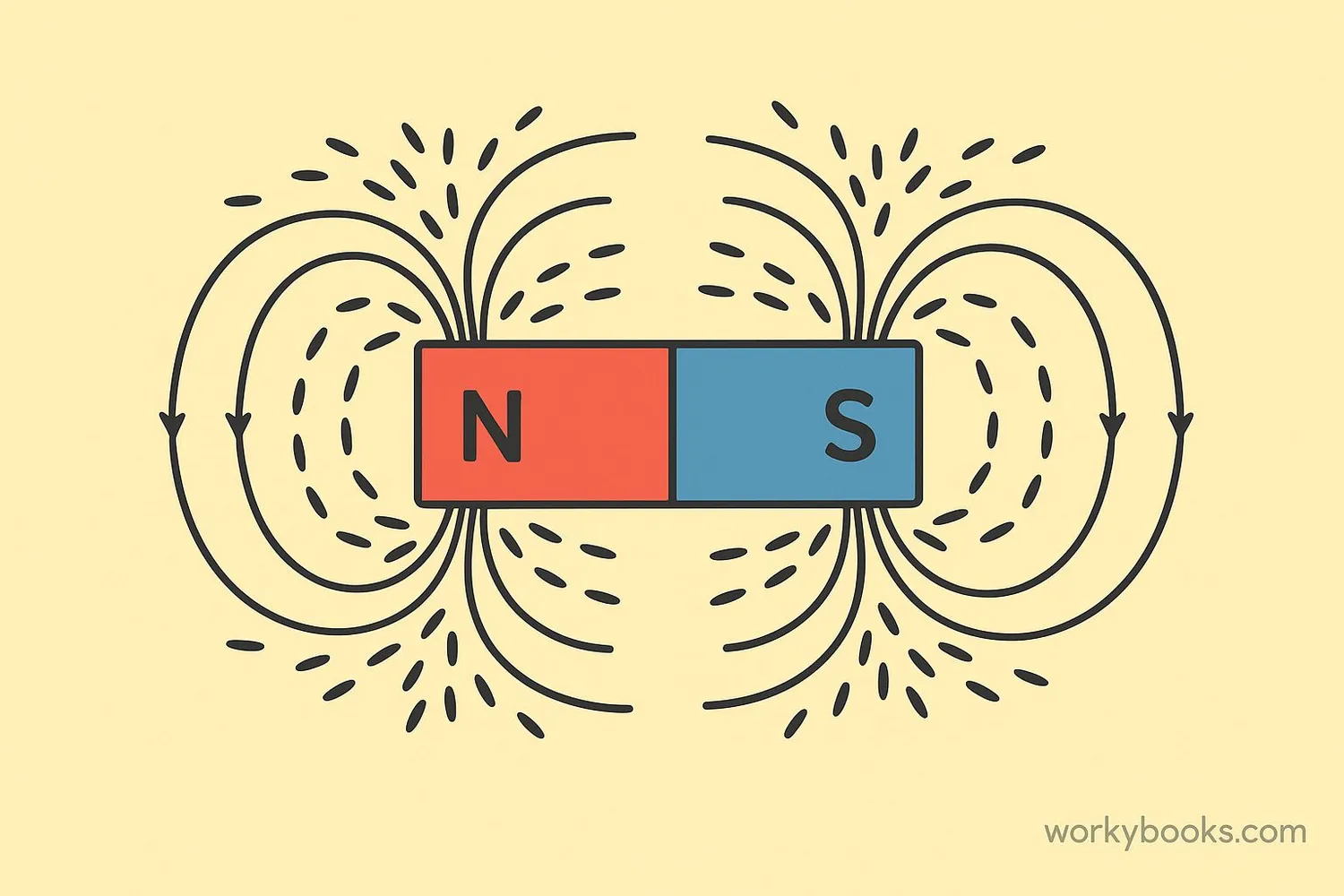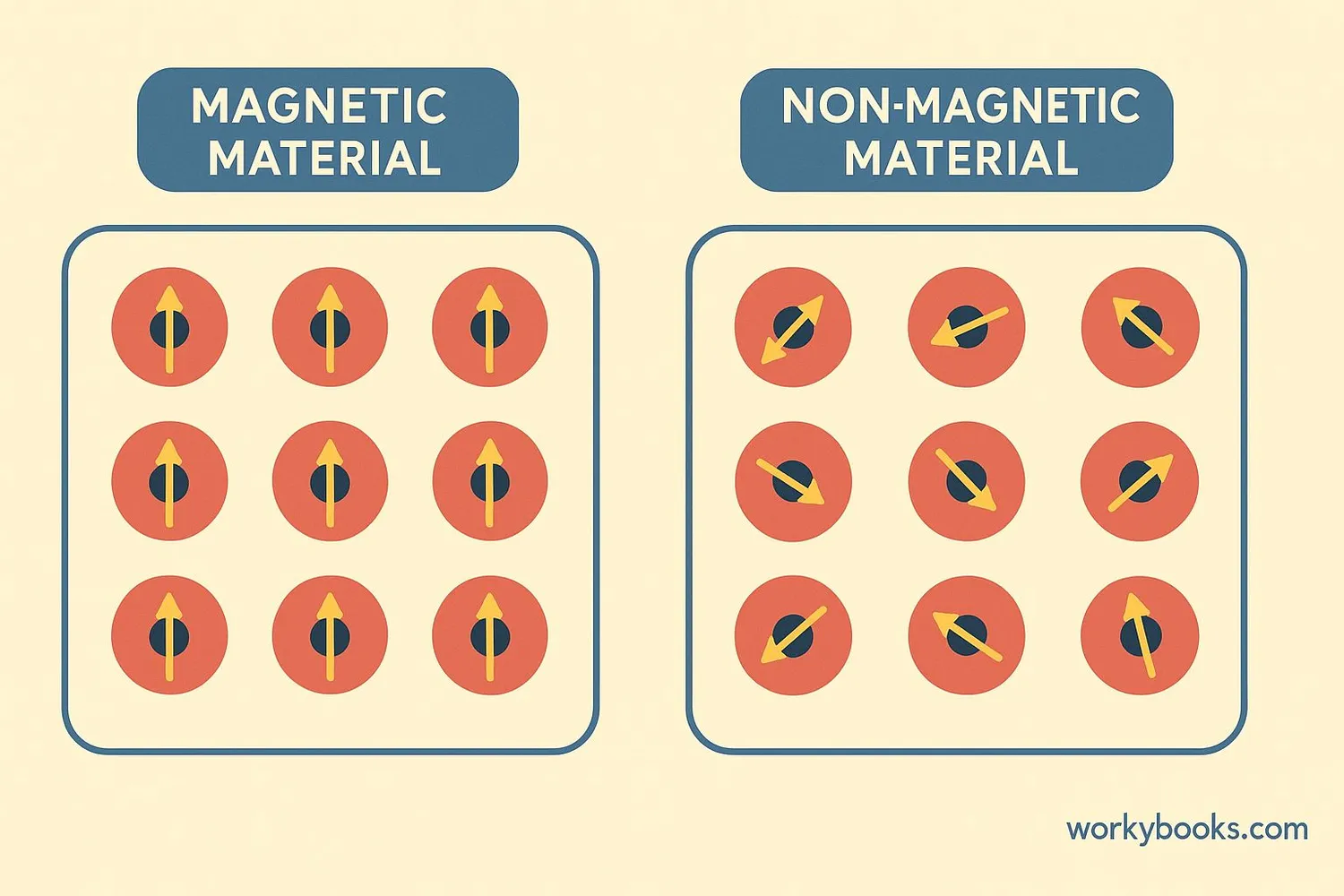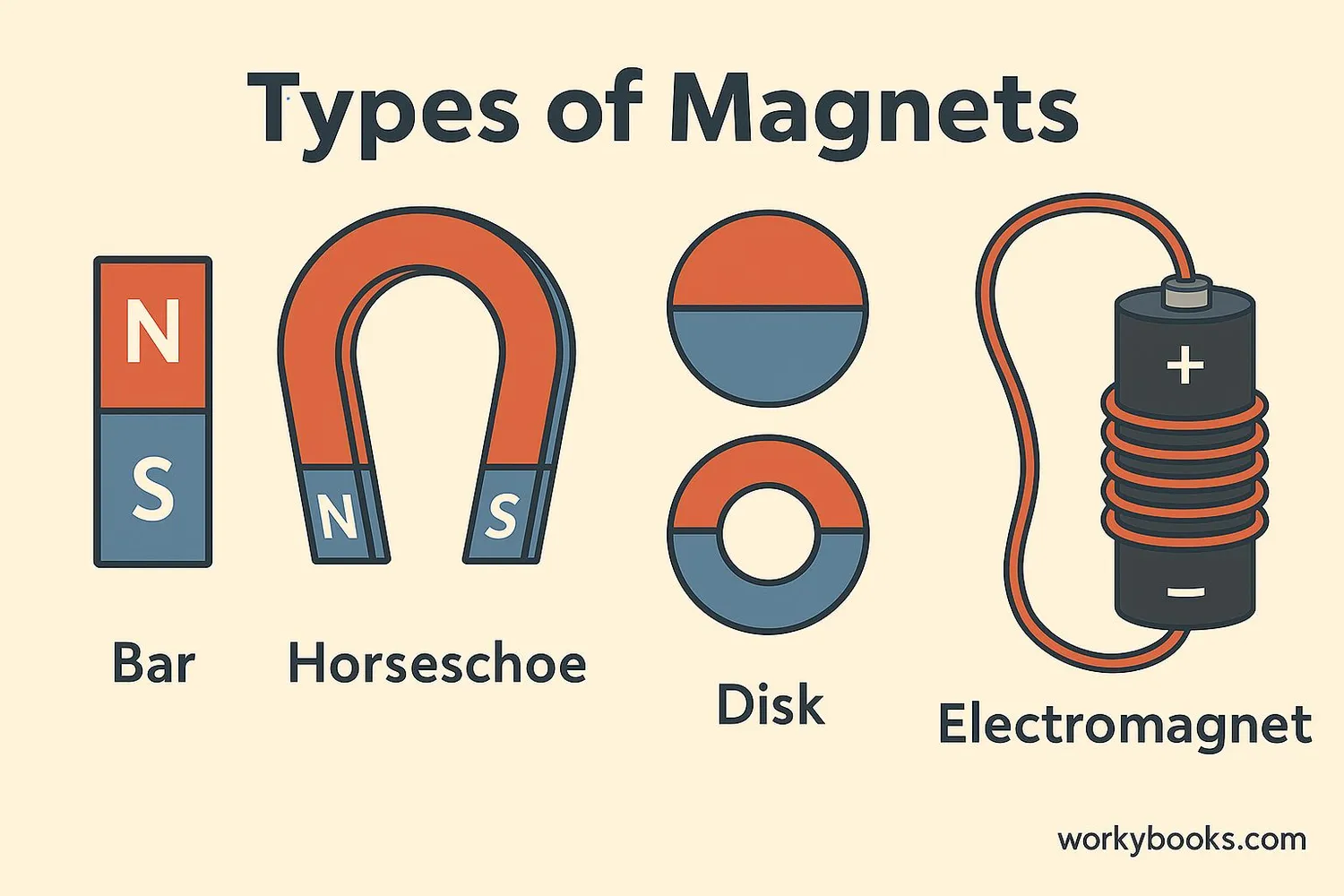Magnetism - Definition, Examples, Quiz, FAQ, Trivia
Discover the invisible forces that attract and repel objects around us
What is Magnetism?

Magnetism is an invisible force that can attract or repel certain materials, especially those containing iron, nickel, or cobalt. This force is created by the motion of electric charges in atoms.
Every magnet has two ends called poles - a north pole and a south pole. Opposite poles attract each other (north and south), while like poles repel (north and north or south and south). The area around a magnet where its force can be felt is called the magnetic field.
Did You Know?
The Earth itself is a giant magnet! Its magnetic field protects us from harmful solar radiation and helps compasses point north.
How Magnets Work

Magnetism works because of how tiny particles called electrons move inside atoms. Here's what happens at the atomic level:
Electron Spin
Electrons spin like tiny tops, creating magnetic fields
Alignment
In magnetic materials, electron spins align
Domains
Groups of aligned atoms form magnetic domains
Poles Form
When domains align, north and south poles appear
Force Field
The magnet creates an invisible magnetic field
The strength of a magnet depends on how well its domains are aligned. Some materials like iron can become temporary magnets when placed in a strong magnetic field because their domains align temporarily.
Magnetic Fields
Magnetic field lines always flow from the north pole to the south pole outside the magnet, and from south to north inside the magnet, forming continuous loops.
Types of Magnets

Magnets come in different forms, each with special properties and uses:
Permanent Magnets
Keep their magnetism for long periods (e.g., refrigerator magnets)
Electromagnets
Only magnetic when electricity flows through them (e.g., junkyard magnets)
Temporary Magnets
Act like magnets only when near strong magnetic fields (e.g., paperclips)
Electromagnets are especially useful because we can turn them on and off with electricity, and make them stronger by adding more wire coils or increasing the electric current. They're used in everything from doorbells to MRI machines in hospitals!
Magnetism Quiz
Test your magnetism knowledge with this quiz! Answer all 5 questions to see how much you've learned.
Frequently Asked Questions
Here are answers to common questions about magnetism:
Magnetism Trivia
Discover some amazing facts about magnetism:
Animal Navigation
Some birds, sea turtles, and even bacteria can sense Earth's magnetic field! They use it like a natural GPS to navigate during migration.
Solar Flares
The Sun's magnetic field is so strong it can create solar flares - explosions of energy that sometimes affect Earth's power grids and create auroras!
Medical Marvels
MRI machines use incredibly strong magnets (up to 60,000 times stronger than Earth's field) to see inside the human body without surgery.
Ancient Discoveries
The ancient Greeks and Chinese knew about magnetism over 2,500 years ago! They noticed certain stones (lodestones) could attract iron.


